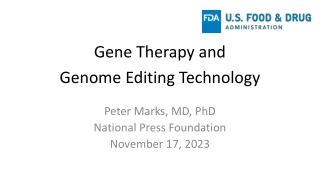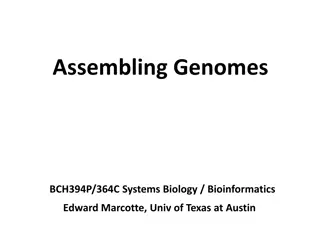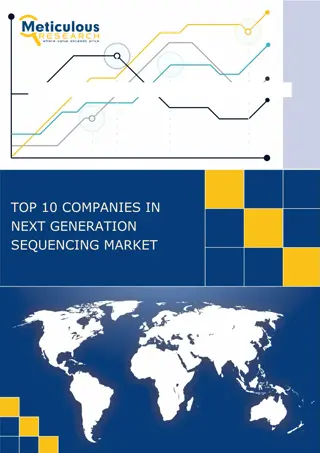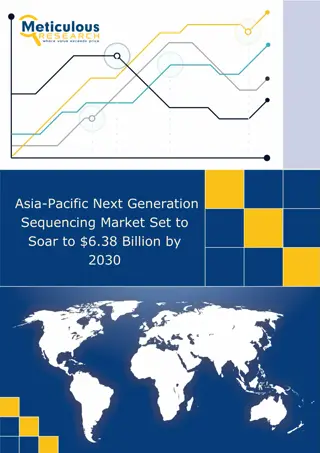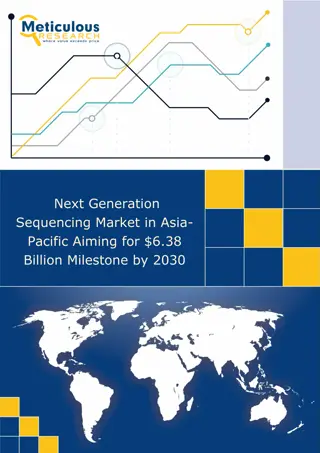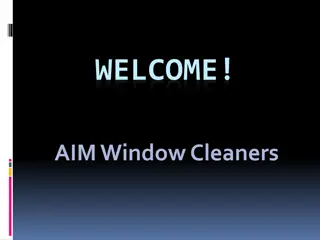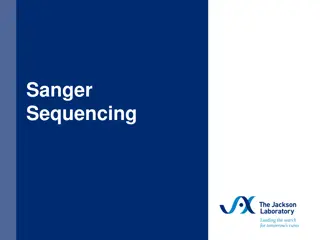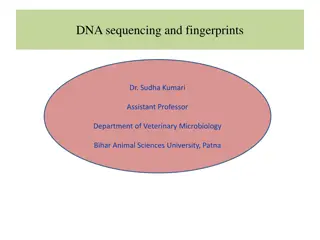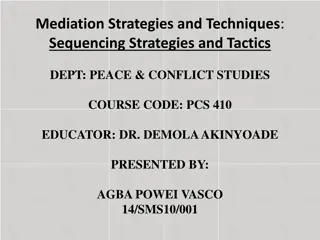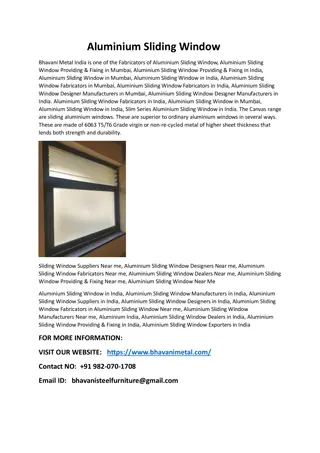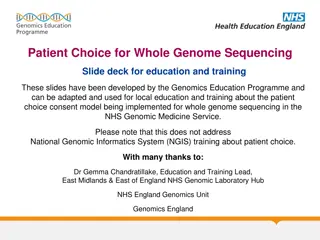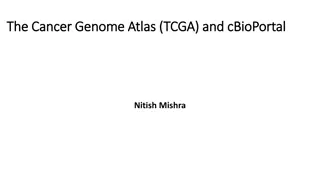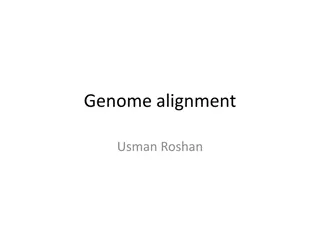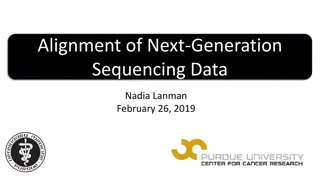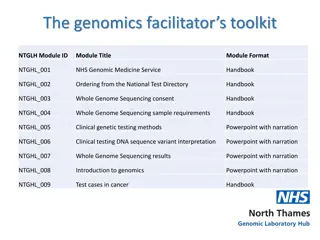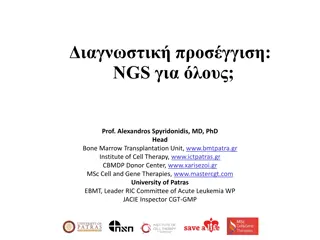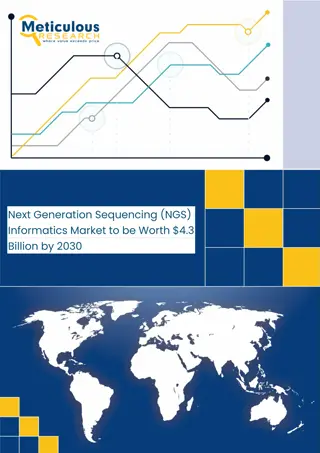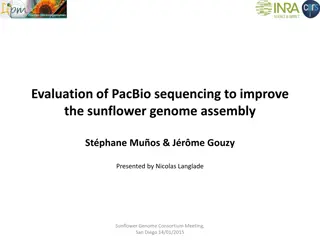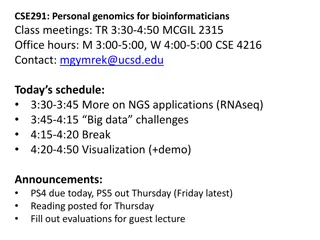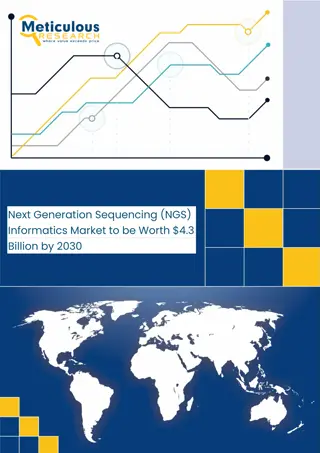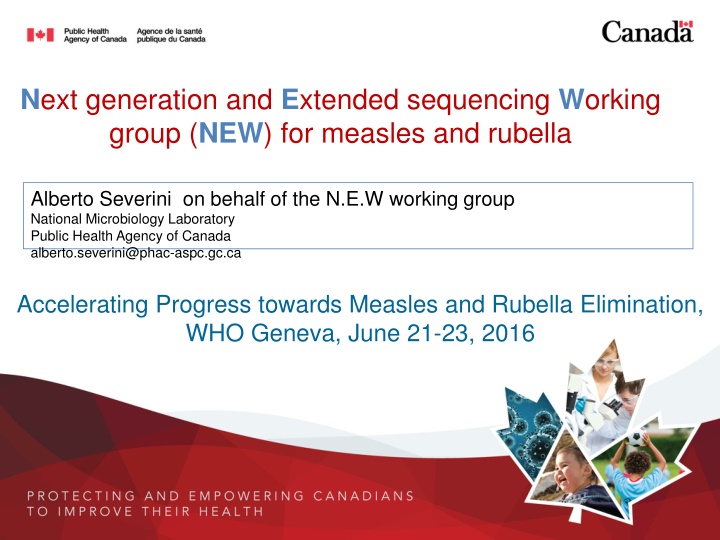
Next Generation and Extended Sequencing for Measles and Rubella Elimination
Discover the efforts of the Next Generation and Extended Sequencing Working Group in enhancing genotyping methods for measles and rubella elimination, as they evaluate and share advanced sequencing techniques to improve molecular surveillance and genome variability understanding.
Download Presentation

Please find below an Image/Link to download the presentation.
The content on the website is provided AS IS for your information and personal use only. It may not be sold, licensed, or shared on other websites without obtaining consent from the author. If you encounter any issues during the download, it is possible that the publisher has removed the file from their server.
You are allowed to download the files provided on this website for personal or commercial use, subject to the condition that they are used lawfully. All files are the property of their respective owners.
The content on the website is provided AS IS for your information and personal use only. It may not be sold, licensed, or shared on other websites without obtaining consent from the author.
E N D
Presentation Transcript
Next generation and Extended sequencing Working group (NEW) for measles and rubella Alberto Severini on behalf of the N.E.W working group National Microbiology Laboratory Public Health Agency of Canada alberto.severini@phac-aspc.gc.ca Accelerating Progress towards Measles and Rubella Elimination, WHO Geneva, June 21-23, 2016
Background The current genotyping approaches (N450 and the H gene for measles) is adequate for routine genotyping However, as we are getting closer to the elimination of measles and rubella the diversity of their genomes diminishes Standardised genotyping targets are often insufficient to distinguish repeated importations from local transmission We need to develop an extended, practical, genotyping target to help document elimination and to rule out endemic transmission 2
The Next generation and Extended sequencing Working group (NEW) for measles and rubella NEW was created in response to discussions on the need for more discriminating methods for the genotyping of measles and rubella. The creation of NEW was one of the recommendation stemming form the 12th Global LabNet meeting in Istanbul. 3
Summary of NEWs objectives (formal terms of reference available) To evaluate and share methods and applications for whole genome sequencing (WGS), next generation sequencing (NGS) extended genome sequencing for measles and rubella To evaluate the utility of these methods for molecular surveillance To establish a catalogue of WGS and extended sequencing collecting data on the rate of measles and rubella genomic change during outbreaks defining the variability of measles and rubella genomes. 4
To report to and advise the WHO measles and rubella laboratory network. NEW met in Berlin on March 16-17, 2016 We developed a set of recommendations for GRMLN We developed a set of standards for obtaining and depositing measles sequences 5
Utility Extended and WGS are not meant to replace standard genotyping by N- 450 for measles and 739 from the E1 gene for rubella WGS or sequencing of the MF-NCR region of measles has proven its utility in low incidence setting, when standard genotyping fails Extensive and uniform sampling of outbreaks, plus a prior knowledge of related sequences, are needed to make the results interpretable It is recommended to obtain as many measles and rubella genomic sequences as possible to develop a database that will aid in outbreak investigations 6
Collaborations and data collection It is recommended to obtain as many measles and rubella genomic sequences as possible to develop a database that will aid in outbreak investigations. NLs are encouraged to collect and store specimens (suited for culture isolation, if possible) for extended sequencing and to collaborate with GSLs and RRLs that have capacity for whole genome and/or extended sequencing. MeaNS and RubeNS eventually be able accept measles and rubella whole genome sequences and measles MF-NCR sequences. 7
Standards (in brief) At this time, there are no recommendations regarding standard protocols for obtaining sequences. WGS-t - Whole genome excluding termini MF-NCR sequence From the stop codon of the M gene to the start codon of the F gene. Next generation sequencing coverage minimum 10 reads Sanger sequencing minimum bidirectional No unsequenced bases 8
Measles genome Alternate genotyping target: H ORF, 1854 nt MF-NCR target 1018 nt WHO genotyping N target 450 nt Moss & Griffin, 2006 WGS-t 15,875 nt 9
WGS resolves the chains of transmission N450 Whole genome 10
D8 (Taunton) imported from the Netherlands in 2014 13-0338) MVs/Ontario.CAN/30.13 13-0340) MVs/British Columbia.CAN/31.13 14-0345) MVs/British Columbia.CAN/11.14/3 14-0407) MVs/Alberta.CAN/12.14/2 13-0599) MVs/Alberta.CAN/44.13/5 14-0436) MVs/British Columbia.CAN/13.14/3 14-0384) MVs/British Columbia.CAN/12.14/2 14-0298) MVs/British Columbia.CAN/09.14/4 13-0597) MVs/Alberta.CAN/44.13/3 14-0435) MVs/British Columbia.CAN/13.14/2 14-0349) MVs/British Columbia.CAN/11.14/7 14-0275) MVs/British Columbia.CAN/09.14/3 13-0596) MVs/Alberta.CAN/44.13/2 14-0433) MVs/British Columbia.CAN/13.14 14-0348) MVs/British Columbia.CAN/11.14/6 14-0273) MVs/British Columbia.CAN/09.14/2 13-0578) MVs/Alberta.CAN/44.13 14-0347) MVs/British Columbia.CAN/11.14/5 14-0271) MVs/British Columbia.CAN/09.14 13-0554) MVs/Alberta.CAN/43.1 14-0573) MVs/Saskatchewan.CAN/16.14/4 14-0391) MVs/British Columbia.CAN/12.14/8 14-0346) MVs/British Columbia.CAN/11.14/4 14-0002) MVs/Alberta.CAN/43.13/3 13-0528) MVs/Alberta.CAN/42.13/2 14-0560) MVs/Saskatchewan.CAN/16.14/3 14-0389) MVs/British Columbia.CAN/12.14/7 14-0001) MVs/Alberta.CAN/46.13/3 13-0527) MVs/Alberta.CAN/42.13 14-0559) MVs/Saskatchewan.CAN/17.14 14-0388) MVs/British Columbia.CAN/12.14/6 14-0343) MVs/British Columbia.CAN/11.14/2 13-0643) MVs/British Columbia.CAN/46.13 13-0498) MVs/Alberta.CAN/41.13 14-0558) MVs/Saskatchewan.CAN/16.14/2 14-0387) MVs/British Columbia.CAN/12.14/5 14-0311) MVs/British Columbia.CAN/11.14 13-0601) MVs/Alberta.CAN/44.13/7 14-0557) MVs/Saskatchewan.CAN/16.14 14-0386) MVs/British Columbia.CAN/12.14/4 14-0309) MVs/British Columbia.CAN/10.14/6 13-0600) MVs/Alberta.CAN/44.13/6 14-0437) MVs/British Columbia.CAN/13.14/4 14-0385) MVs/British Columbia.CAN/12.14/3 14-0301) MVs/British Columbia.CAN/10.14/3 D8 MVi/Manchester.GBR/30.94 U29285 14-0599) MVs/Alberta.CAN/16.14/5 14-0492)MVs/BC.CAN/13.14/5 14-0557)MVs/SK.CAN/16.14 14-0558)MVs/SK.CAN/16.14/2 14-0309)MVs/BC.CAN/10.14/6 14-0560)MVs/SK.CAN/16.14/3 14-0559)MVs/SK.CAN/17.14 14-0573)MVs/SK.CAN/16.14/4 14-0343)MVs/BC.CAN/11.14/2 14-0388)MVs/BC.CAN/12.14/6 14-0391)MVS/BC.CAN/12.14/8 14-0298)MVs/BC.CAN/09.14/4 14-0435)MVs/BC.CAN/13.14/2 14-0349)MVs/BC.CAN/11.14/7 14-0275)MVs/BC.CAN/09.14/3 14-0433)MVs/BC.CAN/13.14 14-0348)MVs/BC.CAN/11.14/6 14-0273)MVs/BC.CAN/09.14/2 14-0407)MVs/AB.CAN/12.14/2 14-0347)MVs/BC.CAN/11.14/5 14-0271)MVs/BC.CAN/09.14 14-0346)MVs/BC.CAN/11.14/4 14-0390)MVs/BC.CAN/12.14/7 14-0345)MVs/BC.CAN/11.14/3 14-0387)MVs/BC.CAN/12.14/5 14-0311)MVs/BC.CAN/11.14 14-0386)MVs/BC.CAN/12.14/4 14-0437)MVs/BC.CAN/13.14/4 14-0385)MVs/BC.CAN/12.14/3 14-0301)MVs/BC.CAN/10.14/3 14-0436)MVs/BC.CAN/13.14/3 14-0384)MVs/BC.CAN/12.14/2 66 58 H gene MF UTR 52 99 36 13-0554)MVs/AB.CAN/43.13 13-0596)MVs/AB.CAN/44.13/2 13-0597)MVs/AB.CAN/44.13/3 13-0599)MVs/AB.CAN/44.13/5 13-0339)MVs/ON.CAN/30.13 13-0600)MVs/AB.CAN/44.13/6 13-0601)MVs/AB.CAN/44.13/7 13-0498)MVs/AB.CAN/41.13 13-0527)MVs/AB.CAN/42.13 14-0001)MVs/AB.CAN/46.13/3 13-0528)MVs/AB.CAN/42.13/2 13-0578)MVs/AB.CAN/44.13 14-0002)MVs/AB.CAN/43.13/3 13-0340)MVs/BC.CAN/31.13 13-0643)MVs/BC.CAN/46.13 100 JN635407.1 MVi/Texas.USA/4.07 14-0599)MVs/AB.CAN/16.14/5 JN635404.1 MVi/Virginia.USA/15.09 100 2 5 EWGNGSWG 11
NEW current membership WHO Mick Mulders US CDC Bettina Benkamp Min-hsin Chen Joe Icenogle Paul Rota Public Health England Kevin Brown Ana Penedos Luxemburg Institute of Health Judith Huebschen Claude Muller RKI Germany Annette Mankertz Sabine Santibanez GIE - Russian Federation Sergey Shulga NML Canada Joanne Hiebert Alberto Severini 12
New members welcome Laboratories with an interest in extended sequencing should consider joining NEW Next NEW meeting will be on Friday, June 24 at !3:30 at HQ Rm M105 (open to all plenary meeting participants) 13

